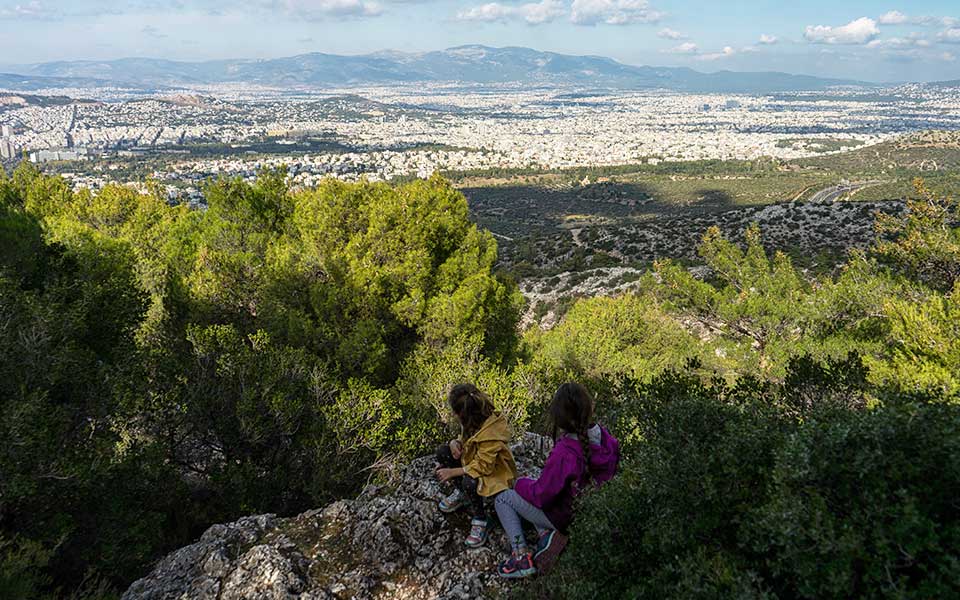The neighborhood of Papagou is one of the three main gates to Ymittos, the mountain overlooking Athens that has been becoming more popular by the year, as outdoor excursions become a way of life for more and more city dwellers.
Cyclists train on the roads while others enjoy downhill descents. The mountain is popular with cross-country and road runners, kids learning to cycle and skate and elderly people taking their daily stroll.
The network of paved roads, dirt roads and trails is accessible not only to those lucky enough to live in the foothills, but also to visitors from across Athens.
In the midst of the recent lockdown, Ymittos, along with mounts Parnitha and Penteli, offered a unique escape for Athenians, with all the upsides and downsides that this entails. While it is great that people appreciate the value of nature, the drawback is that that they often treat the mountain like an extension of a café. Cigarette butts, plastic coffee cups and dog fouling have increased dramatically, and I never cease to be amazed by the number of face masks found dangling on branches.
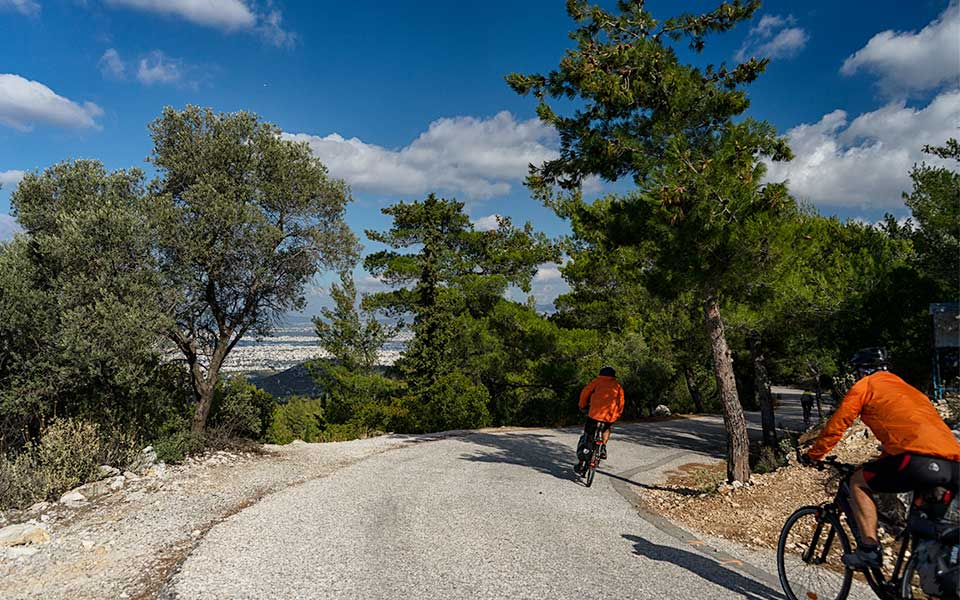
© Marika Tsouderou
Our route is an easy mountain trail for young and old who want to experience the thrill of an ascent – of finding one’s footing on the rough terrain, getting out of breath and feeling the elation of a beautiful view at the highest point.
Start at the corner of Zisimopoulou and Adelfon Didaskalou streets in Ano Papagou, by the barrier. It is unfortunate that the Attiki Odos cut off the mountain from the city, but access is provided by a concrete bridge over the motorway. On the other side of the bridge, you will find a dirt road with branches leading up to the heart of Ymittos.
Route 7 which you will follow starts on the right, around 150 meters from the start of the track. It is well signposted with red markers and wooden posts.
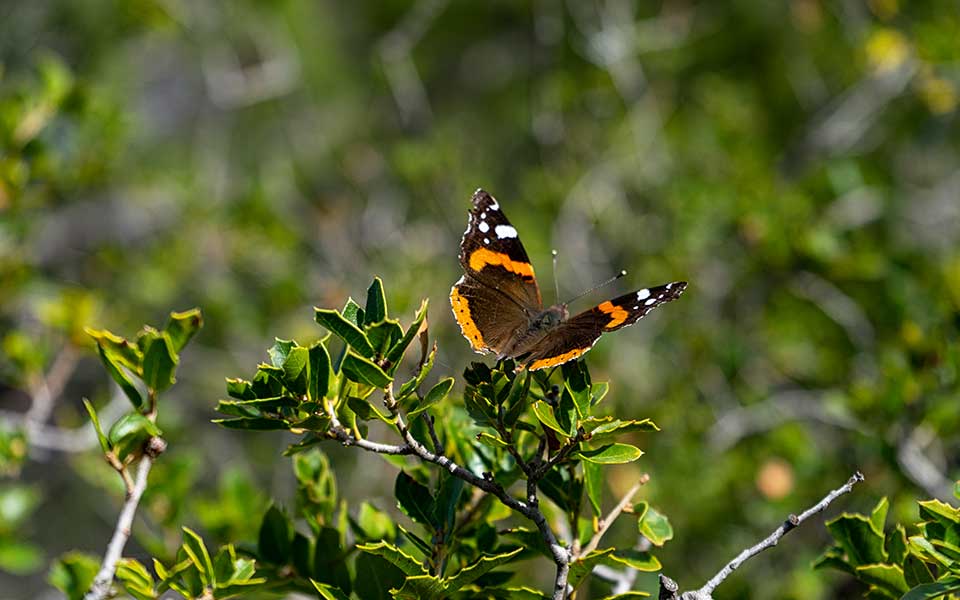
© Marika Tsouderou
You continue to climb at a steady slope through a dense forest of pine and cypress. This time of year, the cyclamen and blooming heather add dashes of color to the green landscape, while the last of the summer thyme leaves its scent in the air. After crossing another dirt road, keep following the red trail markers.
After about 200 meters of a steeper climb, you will meet the main paved road, where you will turn right to arrive at the Anthousa Tower after around 50 meters. The walk to this point should take you around 50 minutes at a leisurely pace. To your left you will see the start of route 10 leading to Asteriou Monastery (15 mins), the OTE pass (70 mins) and on to the Monastery of Aghios Ioannis Kynigos (2.5 hours).
The plateau where the Anthousa Tower is located in an ideal rest point. On one side you can take in the beautiful view over the Attica basin, where on clear days you can count ships in the port of Piraeus and even see Aegina in the distance. On the other side, you can see the path continuing along the ridge, and the green mountain slopes ending in deep gorges.
The return
The return is downhill almost the whole way and is often steeper, admittedly making for a less fun hike than the ascent. After passing a couple of picnic benches, you will start the descent. Walk carefully as the trail is slippery in places. The hum of the city is more pronounced on this side, but the view is still spectacular.
You will come out on a dirt track which you will follow a few meters to the right until you spot the red marker which will put you back on the trail. Follow the last leg through the pine forest to the starting point.
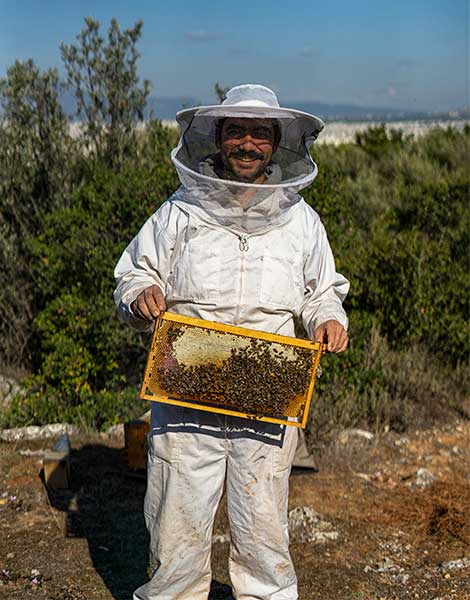
© Marika Tsouderou
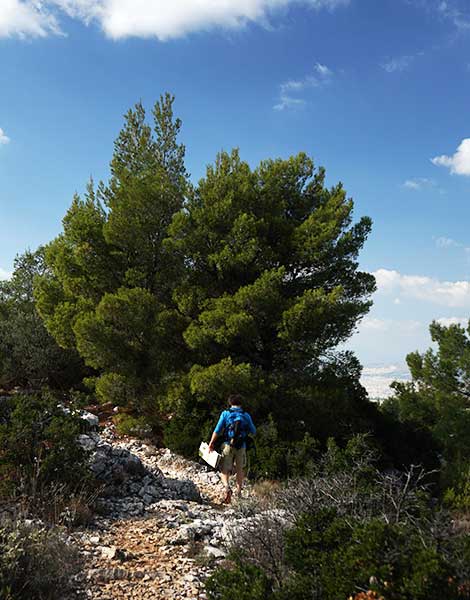
© Marika Tsouderou
The beekeepers of Ymittos
Ymittos has been famed from ancient times for its variety of plants and trees. The honey produced here is mainly thyme honey, with a mix of aromatic plants and trees. Today around 30 amateur beekeepers are active on the northwestern slope of Ymittos – from Aghia Paraskevi and Holargos to Papagou – each minding between a handful and 200 beehives.
37-year-old Aggelos Andriopoulos, a professional engineer, is one of them. His interest in beekeeping grew out of his love for honey and his passion for the mountain. More experienced beekeepers helped him get started, and through reading and practice he has learned to produce pollen and royal jelly, while he is still developing his skills.
“Ymittos has an amazing biodiversity in its flora even though it borders on the city. Thyme, heather, strawberry tree, pine tree, rockrose, rosemary, crocus, cyclamen and carob are the flowering plants which, in combination with the mild climate of Athens, create an ideal environment for bees to develop. If you are lucky, you can have two harvests in a year. In the summer you will get a flower honey dominated by thyme and eucalyptus, while autumn honey will be a little heavier on the pine and carob,” he explains.
Attempts by the local beekeepers to form a cooperative have not worked out, so each provides their honey to friends and acquaintances. The endeavor is not without its problems. Last year, a careless beekeeper smoking out his hives started a bush fire, while some have been known to place their hives on paths where they get in they get in the way of hikers. The beekeepers claim that spraying for insects in nearby houses kills their bees, while thefts of beehives have also been reported.
“There may not be a cooperative, but there is a legal framework covering beekeeping, which the majority respect. The mountain belongs to everyone, and with mutual respect we can all enjoy it together,”Andriopoulos stresses.
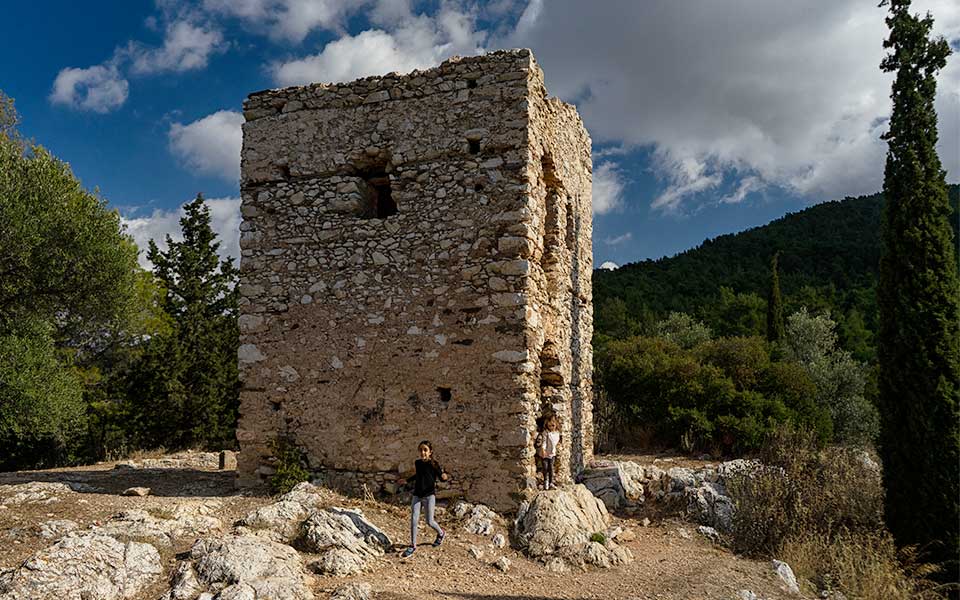
© Marika Tsouderou
Anthousa Tower
The tower was reported as a ruin already in 1722, but its history is not known. It is almost certainly not Byzantine or Frankish. Its building technique points to the Ottoman era, which is supported by the name “Koula,” by which it is also known. If this is accurate, one suspects that it was built to guard a ciftlik (an Ottoman estate) or as a military guardhouse – small openings in the walls were probably intended as gun emplacements. It is square, with sides measuring 4.5 meters, and only two of the original three stories survive to a height of 6.25 meters.

